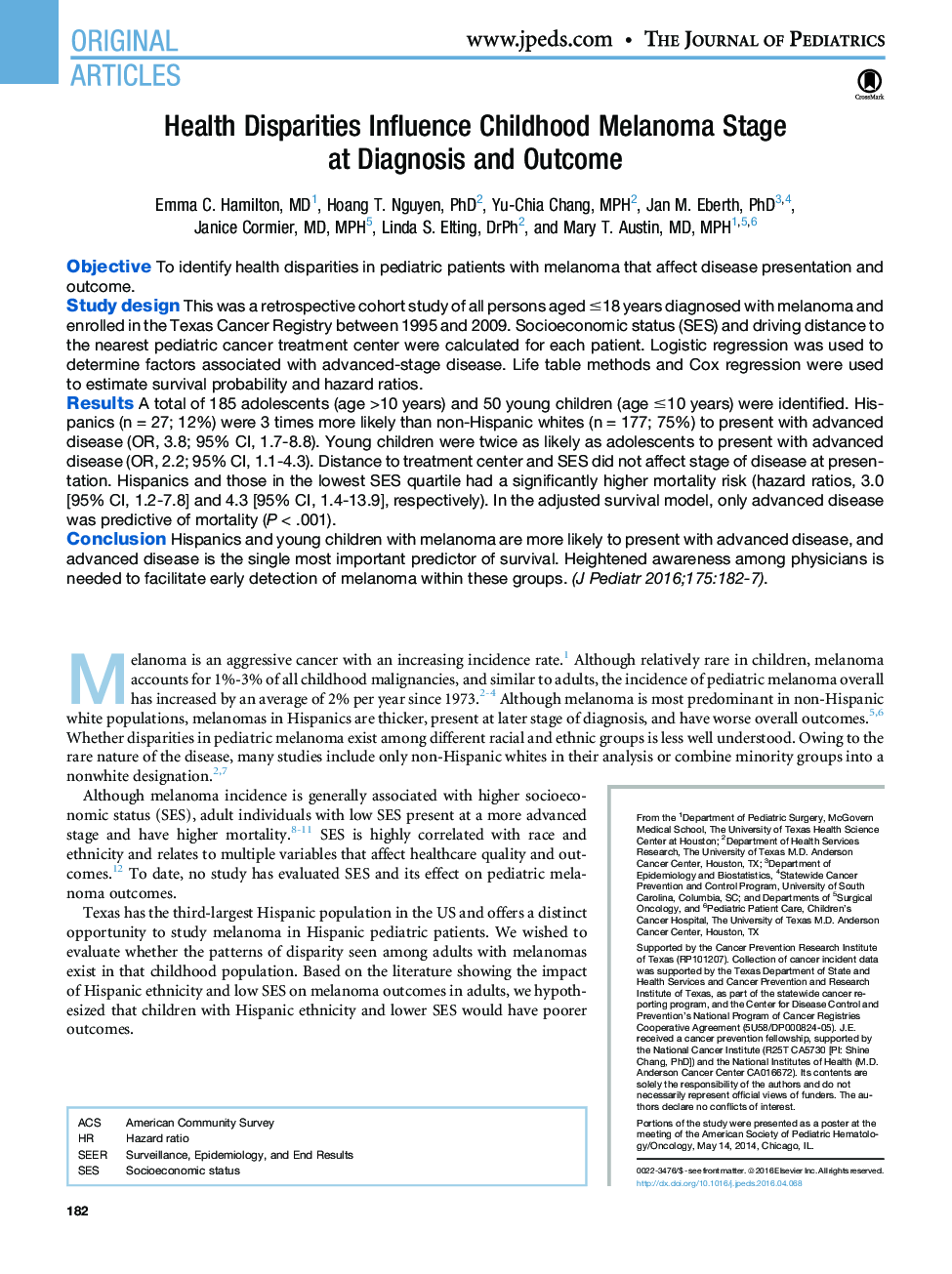| Article ID | Journal | Published Year | Pages | File Type |
|---|---|---|---|---|
| 6219361 | The Journal of Pediatrics | 2016 | 6 Pages |
ObjectiveTo identify health disparities in pediatric patients with melanoma that affect disease presentation and outcome.Study designThis was a retrospective cohort study of all persons aged â¤18 years diagnosed with melanoma and enrolled in the Texas Cancer Registry between 1995 and 2009. Socioeconomic status (SES) and driving distance to the nearest pediatric cancer treatment center were calculated for each patient. Logistic regression was used to determine factors associated with advanced-stage disease. Life table methods and Cox regression were used to estimate survival probability and hazard ratios.ResultsA total of 185 adolescents (age >10 years) and 50 young children (age â¤10 years) were identified. Hispanics (n = 27; 12%) were 3 times more likely than non-Hispanic whites (n = 177; 75%) to present with advanced disease (OR, 3.8; 95% CI, 1.7-8.8). Young children were twice as likely as adolescents to present with advanced disease (OR, 2.2; 95% CI, 1.1-4.3). Distance to treatment center and SES did not affect stage of disease at presentation. Hispanics and those in the lowest SES quartile had a significantly higher mortality risk (hazard ratios, 3.0 [95% CI, 1.2-7.8] and 4.3 [95% CI, 1.4-13.9], respectively). In the adjusted survival model, only advanced disease was predictive of mortality (P < .001).ConclusionHispanics and young children with melanoma are more likely to present with advanced disease, and advanced disease is the single most important predictor of survival. Heightened awareness among physicians is needed to facilitate early detection of melanoma within these groups.
